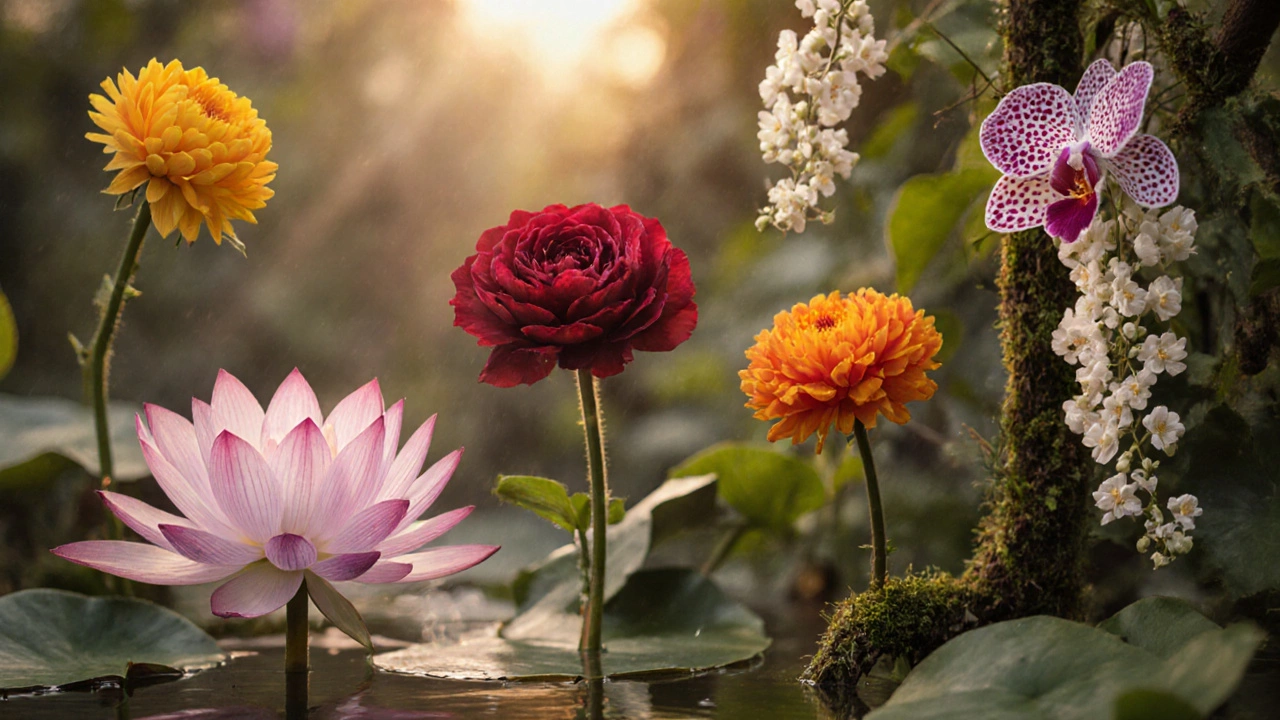Explore India's top beautiful flowers, from the iconic lotus to fragrant jasmine, with cultural insights, growing tips, and a handy comparison guide.
Indian Flower Symbolism: Meaning, Culture, and Common Blooms
When you think of Indian flower symbolism, the deep cultural and spiritual meanings attached to flowers in India. Also known as sacred flower symbolism, it is not just about beauty—it’s about devotion, identity, and connection to the land. In India, flowers aren’t just decorations. They’re prayers held in petals. A single marigold garland can carry the weight of a festival, while a lotus floating on a temple pond speaks of purity, rebirth, and divine presence. These meanings aren’t borrowed from old books—they’re lived every day, in homes, temples, weddings, and funerals.
Flowers like lotus, a sacred bloom tied to Hindu deities and spiritual awakening, are central to rituals from Diwali to Durga Puja. The jasmine, a fragrant white flower worn in hair and offered in temples, carries the scent of love and femininity across South India. Then there’s the marigold, the workhorse of Indian floral decoration, used in everything from street festivals to mourning ceremonies. Each has a role, a history, and a reason. These aren’t random choices—they’re traditions passed down through generations, tied to seasons, gods, and local beliefs.
Even the way flowers are arranged matters. In North India, red hibiscus is offered to Kali, while in Kerala, banana flowers are part of temple offerings. In Bengal, the champak is linked to Krishna’s legends. These aren’t just floral choices—they’re cultural codes. And while modern gardens may grow hydrangeas or zinnias for looks, the real heartbeat of Indian gardening still beats with flowers that carry meaning. Whether you’re growing flowers on a balcony, tending a village plot, or simply placing a bloom in front of a photo, you’re taking part in a centuries-old conversation between people and plants.
What you’ll find in the posts below isn’t just a list of flowers. It’s a look at how Indians grow, use, and honor blooms in daily life—from the most common year-round flowers that survive monsoons and heat, to the ones that show up in rituals, markets, and homes. You’ll see why certain plants thrive in Indian conditions, how they’re tied to local traditions, and how even a simple balcony garden can carry deep cultural roots. This isn’t about botany alone. It’s about how flowers speak when words don’t.
